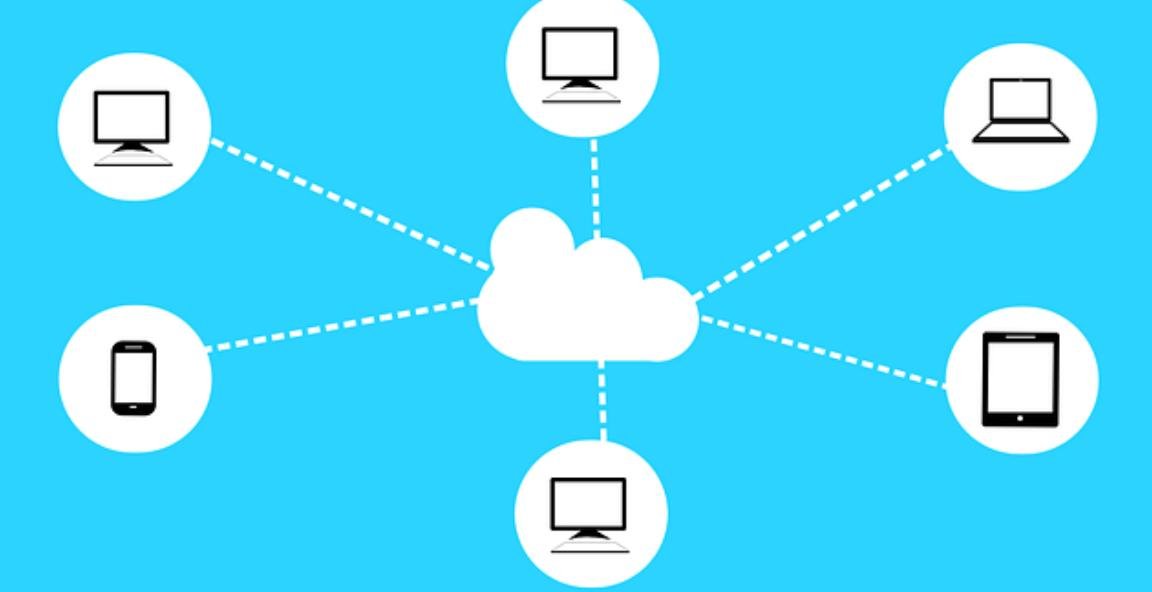Move your PBX system to the cloud offers numerous benefits, including scalability, cost savings, and advanced features. But before making the decision, you must carefully consider factors such as your current telephony infrastructure, network capabilities, security measures, and provider reliability. This blog post will guide you through the key considerations, benefits, and challenges of transitioning to a cloud-based PBX system, helping you make an informed decision for your organization’s communication strategy.
Key Takeaways:
- Evolution of PBX: Understand the shift from traditional on-premises PBX systems to cloud-based solutions for advanced features and reduced infrastructure.
- Benefits of Cloud PBX: Emphasize scalability, flexibility, cost savings, and feature-rich functionality like auto-attendants and voicemail-to-email.
- Considerations Before Migration: Assess current infrastructure, network capabilities, hardware compatibility, bandwidth requirements, integration with existing systems, security measures, and regulatory compliance.
- Challenges and Drawbacks: Address potential issues such as reliance on internet connectivity, security concerns, customization limitations, and transition difficulties.
- Choosing the Right Provider: Review SLAs, scalability options, phased rollout strategies, and prioritize employee training for successful adoption and user confidence.
Understanding PBX and Its Evolution
Role of PBX in Organizations
Before delving into the shift towards cloud PBX technology, it is imperative to understand the fundamental role of Private Branch Exchange (PBX) systems in organizations. PBX serves as a crucial telecommunications system that enables internal communication within a company while also connecting to external networks. Traditionally, on-premises PBX systems relied on physical hardware to manage calls and facilitate communication. However, with the evolution of technology, organizations are now transitioning to cloud-based solutions.
Shift to Cloud PBX Technology
On the forefront of telecommunications advancements is the shift towards cloud PBX technology. This transformation involves moving from traditional on-premises PBX systems to internet-based services that offer advanced features without the need for extensive infrastructure. Cloud PBX solutions provide enhanced scalability, flexibility, and cost-effectiveness for businesses, making them an attractive option for modern communication needs. According to industry experts, this shift signifies a move towards a more efficient and dynamic telephony setup.
Technology has paved the way for organizations to embrace the benefits of cloud PBX, enabling them to streamline communication processes and access a broader range of features compared to traditional systems. With cloud PBX, businesses can leverage advanced functionalities such as auto-attendants and voicemail-to-email services, enhancing communication efficiency and productivity within the organization.

Key Benefits of Cloud PBX
Scalability and Flexibility
Little to no upfront investment is required when moving your PBX system to the cloud, allowing you to easily scale your telephony needs up or down as your business grows or changes. Any adjustments can be made quickly and efficiently without the hassle of physical hardware upgrades.
| Scalability | Cloud PBX offers the ability to easily add or remove users and phone lines, adapting to your business needs in real-time. |
| Flexibility | With cloud PBX, you can access your phone system from anywhere with an internet connection, providing flexibility for remote work or expanding to multiple locations. |
Cost Savings and Advanced Features
Cost savings are a significant benefit when transitioning to a cloud PBX system. Subscriptions models can help you save money compared to traditional on-premises setups, while also providing access to advanced features that enhance your communication capabilities.
| Cost Savings | Subscription-based pricing can save you money on initial setup costs and ongoing maintenance expenses, potentially reducing your telephony budget by up to 30%. |
| Advanced Features | Cloud PBX offers feature-rich functionality such as auto-attendants, voicemail-to-email, and other modern communication tools to streamline your business operations. |
Considerations Before Making the Move
Assessing Current Infrastructure
All set to transition your PBX system to the cloud? Before you take the leap, it is crucial to assess your current telephony infrastructure. This involves evaluating your network capabilities, ensuring hardware compatibility, and determining your bandwidth requirements for VoIP calls. By understanding your organization’s current setup, you can accurately gauge the readiness for a cloud PBX migration and avoid potential roadblocks along the way.
Integration, Security, and Compliance
Security is a key consideration when considering a move to cloud-based telephony. It’s necessary to vet potential cloud PBX providers for their security measures to safeguard your communication data. Ensuring compliance with relevant regulations is paramount for maintaining the confidentiality and integrity of your organization’s communications.
Integration with existing systems is another critical aspect to keep in mind. Compatibility with your current infrastructure and applications is vital for a smooth transition to a cloud PBX system. This includes considerations such as data migration, integration with CRM tools, and other business-critical software to ensure seamless operation post-migration.
Challenges and Potential Drawbacks
Once again, it is important to consider the potential challenges and drawbacks before migrating your PBX system to the cloud. Two key areas that organizations often face difficulties with are the reliance on internet connectivity and security concerns as well as customization limitations and transition difficulties.
Reliance on Connectivity and Security Concerns
Drawbacks of moving to a cloud PBX system include the reliance on internet connectivity for continuous and reliable communication. If your internet connection experiences downtime or latency issues, it could affect your ability to make and receive calls, impacting operational efficiency. There may be security concerns related to transmitting sensitive data over the internet, which could potentially expose your organization to cyber threats.
Customization Limitations and Transition Difficulties
To further complicate matters, customization limitations and transition difficulties can arise when moving to a cloud PBX system. You may find that certain customization options available in traditional on-premises systems are not as easily achievable in a cloud-based solution. Moreover, transitioning your entire telephony infrastructure to a new system can be a complex process that requires careful planning and implementation to avoid disruptions in communication.
Choosing the Right Cloud PBX Provider
Reviewing SLAs and Scalability Options
For a successful migration to a cloud PBX system, it is crucial to thoroughly review the Service Level Agreements (SLAs) offered by potential providers. Look for providers that offer reliability guarantees and uptime commitments to ensure uninterrupted communication within your organization. Consider the scalability options provided by the provider. As your business grows, you will want a cloud PBX solution that can easily scale with your needs without incurring substantial additional costs. By carefully assessing SLAs and scalability options, you can choose a provider that aligns with your communication goals.
Employee Training and Successful Adoption
Cloud PBX systems come with a range of advanced features and functionalities that can significantly enhance your organization’s communication capabilities. To ensure a successful adoption of the new system, it is necessary to prioritize employee training. Cloud PBX providers may offer training programs to familiarize your staff with the system’s features and functionalities. By investing in training, you can ensure that your employees are confident in using the new system effectively, ultimately boosting operational efficiency in your business environment.
Training employees on the new cloud PBX system can lead to improved user confidence and a smoother transition. Employees who are well-trained on the system are better equipped to take advantage of its capabilities, leading to enhanced communication and collaboration within your organization. By prioritizing training as part of the implementation process, you can set the stage for a successful migration to a cloud PBX system.
Final Words
Considering all points discussed, you may be wondering if moving your PBX system to the cloud is the right decision for your organization. The evolution towards cloud technology in business telephony offers various benefits such as scalability, cost savings, and advanced features. However, before making the move, it is crucial to carefully assess your current telephony infrastructure, network capabilities, and security measures to ensure a smooth transition.
Choosing the right cloud PBX provider is key in leveraging the benefits of cloud technology while addressing potential challenges. By reviewing Service Level Agreements, scalability options, and implementation strategies, you can make an informed decision that aligns with your organization’s goals. Keep in mind, a well-planned implementation and focus on employee training can help you successfully adopt cloud PBX and enhance communication and operational efficiency in your modern business environment.
FAQ
Q: What is a PBX system and how does it work?
A: A PBX system, or Private Branch Exchange, is a telecommunications system that allows for internal communication within an organization as well as connections to external networks. It routes calls, manages phone lines, and provides features like voicemail and call forwarding.
Q: What are the key benefits of migrating to a cloud PBX system?
A: Migrating to a cloud PBX system offers scalability and flexibility, cost savings through subscription models, and advanced features like auto-attendants and voicemail-to-email. It also eliminates the need for extensive physical infrastructure.
Q: What should businesses consider before transitioning to a cloud PBX system?
A: Before migrating to a cloud PBX system, businesses should assess their current telephony infrastructure, network capabilities, hardware compatibility, and bandwidth requirements for VoIP calls. Integration with existing systems, security measures, and compliance with regulations are also crucial considerations to address.


























